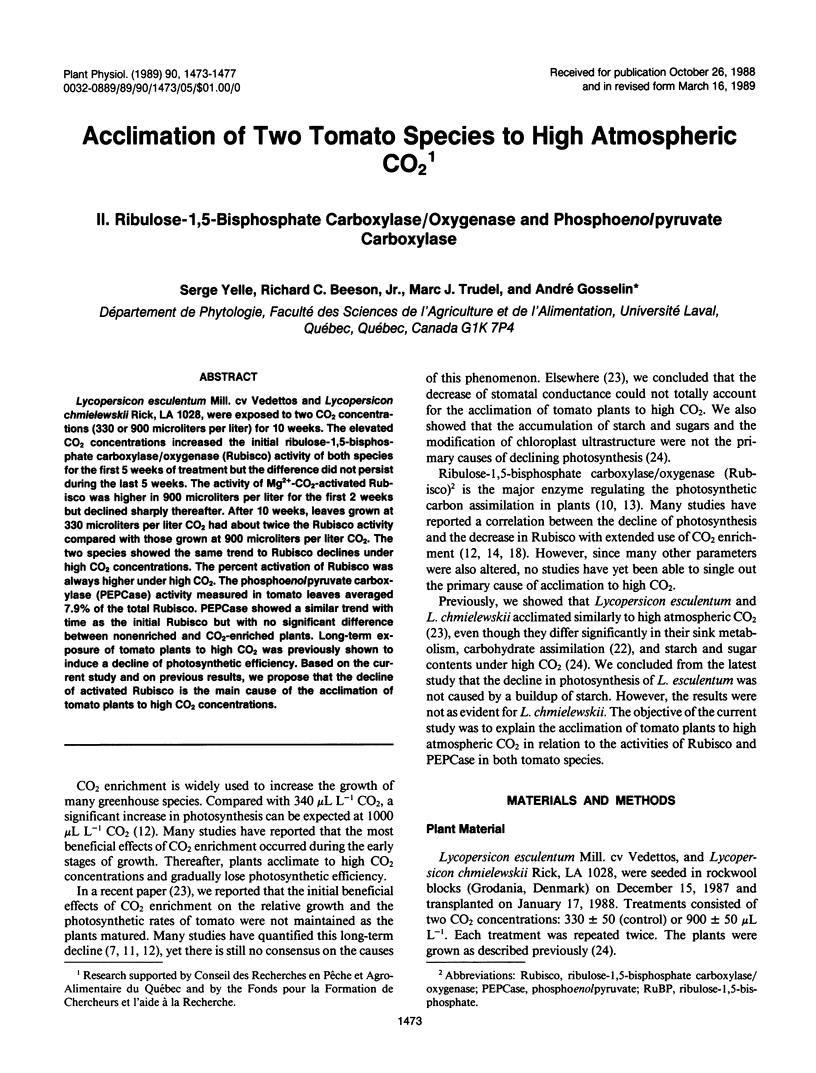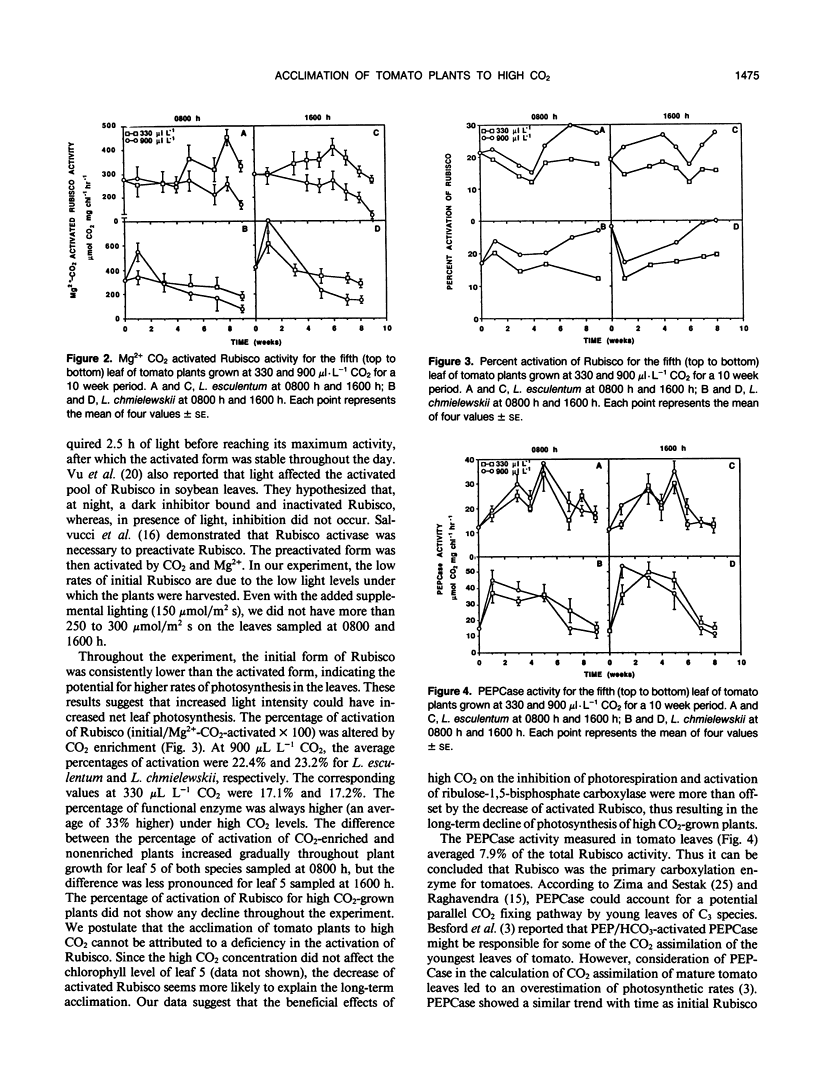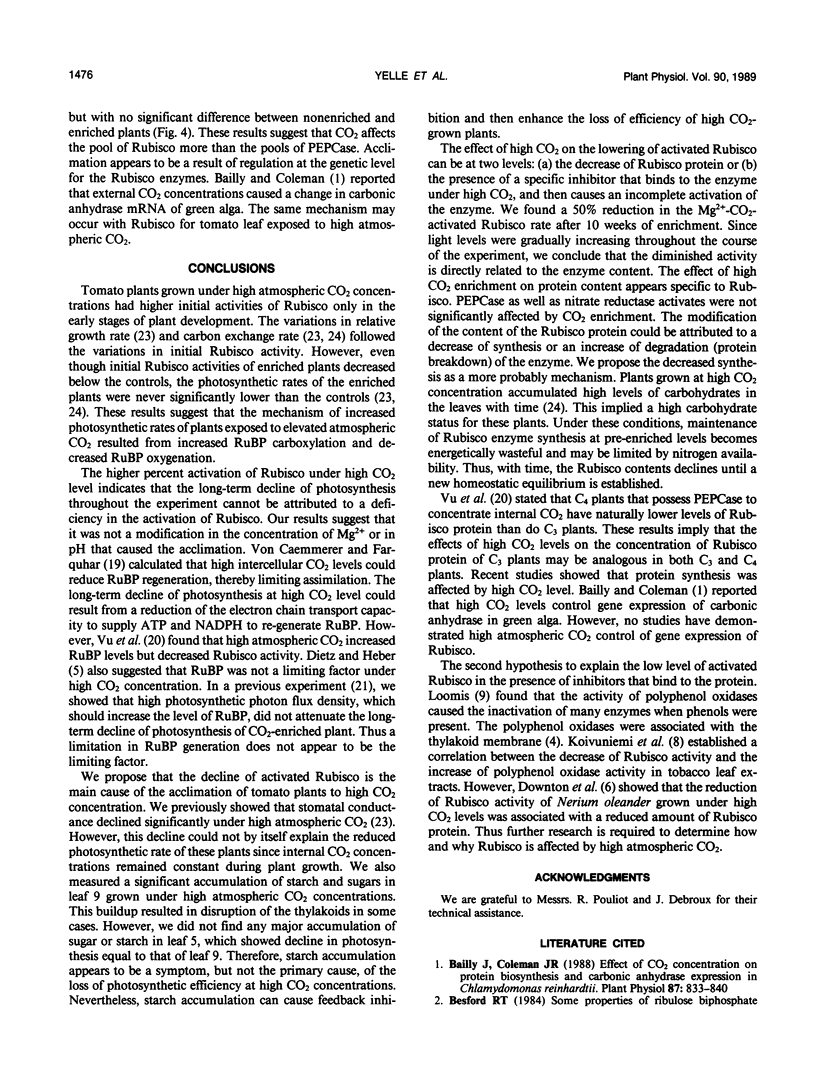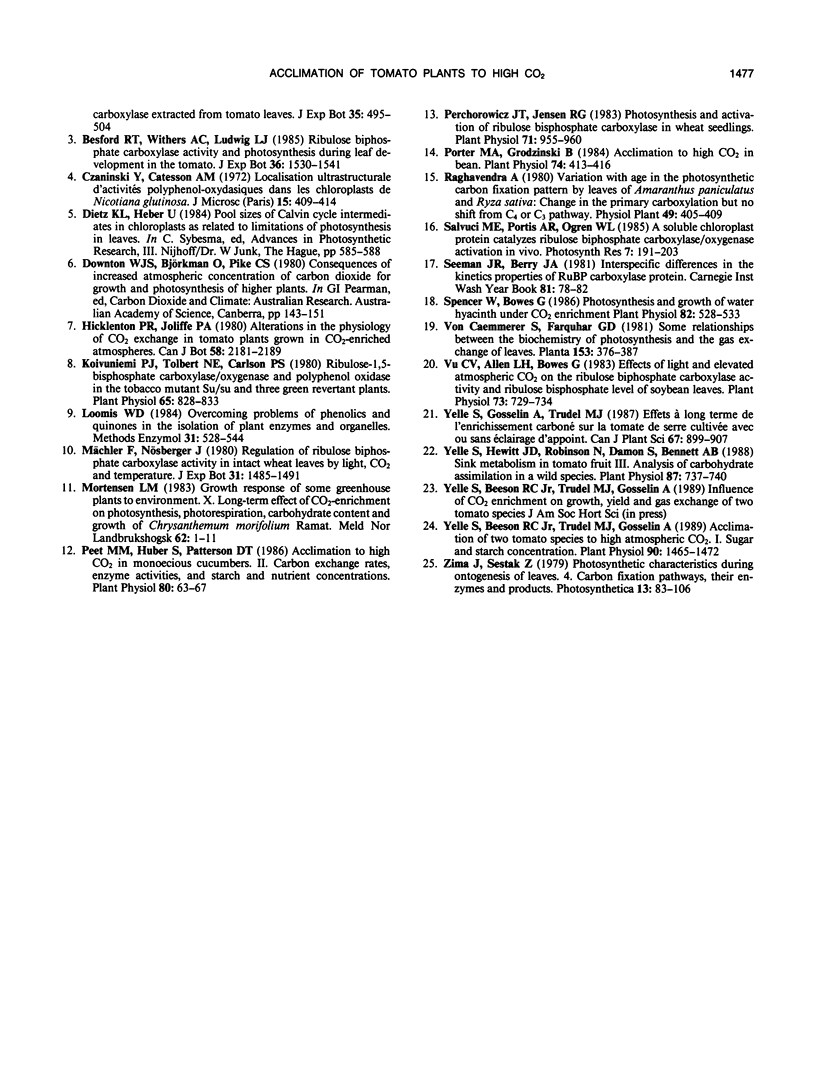Abstract
Lycopersicon esculentum Mill. cv Vedettos and Lycopersicon chmielewskii Rick, LA 1028, were exposed to two CO2 concentrations (330 or 900 microliters per liter) for 10 weeks. The elevated CO2 concentrations increased the initial ribulose-1,5-bisphosphate carboxylase/oxygenase (Rubisco) activity of both species for the first 5 weeks of treatment but the difference did not persist during the last 5 weeks. The activity of Mg2+-CO2-activated Rubisco was higher in 900 microliters per liter for the first 2 weeks but declined sharply thereafter. After 10 weeks, leaves grown at 330 microliters per liter CO2 had about twice the Rubisco activity compared with those grown at 900 microliters per liter CO2. The two species showed the same trend to Rubisco declines under high CO2 concentrations. The percent activation of Rubisco was always higher under high CO2. The phosphoenolpyruvate carboxylase (PEPCase) activity measured in tomato leaves averaged 7.9% of the total Rubisco. PEPCase showed a similar trend with time as the initial Rubisco but with no significant difference between nonenriched and CO2-enriched plants. Long-term exposure of tomato plants to high CO2 was previously shown to induce a decline of photosynthetic efficiency. Based on the current study and on previous results, we propose that the decline of activated Rubisco is the main cause of the acclimation of tomato plants to high CO2 concentrations.
Full text
PDF




Selected References
These references are in PubMed. This may not be the complete list of references from this article.
- Bailly J., Coleman J. R. Effect of CO(2) Concentration on Protein Biosynthesis and Carbonic Anhydrase Expression in Chlamydomonas reinhardtii. Plant Physiol. 1988 Aug;87(4):833–840. doi: 10.1104/pp.87.4.833. [DOI] [PMC free article] [PubMed] [Google Scholar]
- Koivuniemi P. J., Tolbert N. E., Carlson P. S. Ribulose-1,5-bisphosphate Carboxylase/Oxygenase and Polyphenol Oxidase in the Tobacco Mutant Su/su and Three Green Revertant Plants. Plant Physiol. 1980 May;65(5):828–833. doi: 10.1104/pp.65.5.828. [DOI] [PMC free article] [PubMed] [Google Scholar]
- Loomis W. D. Overcoming problems of phenolics and quinones in the isolation of plant enzymes and organelles. Methods Enzymol. 1974;31:528–544. doi: 10.1016/0076-6879(74)31057-9. [DOI] [PubMed] [Google Scholar]
- Peet M. M., Huber S. C., Patterson D. T. Acclimation to High CO(2) in Monoecious Cucumbers : II. Carbon Exchange Rates, Enzyme Activities, and Starch and Nutrient Concentrations. Plant Physiol. 1986 Jan;80(1):63–67. doi: 10.1104/pp.80.1.63. [DOI] [PMC free article] [PubMed] [Google Scholar]
- Perchorowicz J. T., Jensen R. G. Photosynthesis and Activation of Ribulose Bisphosphate Carboxylase in Wheat Seedlings : Regulation by CO(2) and O(2). Plant Physiol. 1983 Apr;71(4):955–960. doi: 10.1104/pp.71.4.955. [DOI] [PMC free article] [PubMed] [Google Scholar]
- Porter M. A., Grodzinski B. Acclimation to High CO(2) in Bean : Carbonic Anhydrase and Ribulose Bisphosphate Carboxylase. Plant Physiol. 1984 Feb;74(2):413–416. doi: 10.1104/pp.74.2.413. [DOI] [PMC free article] [PubMed] [Google Scholar]
- Spencer W., Bowes G. Photosynthesis and Growth of Water Hyacinth under CO(2) Enrichment. Plant Physiol. 1986 Oct;82(2):528–533. doi: 10.1104/pp.82.2.528. [DOI] [PMC free article] [PubMed] [Google Scholar]
- Vu C. V., Allen L. H., Bowes G. Effects of Light and Elevated Atmospheric CO(2) on the Ribulose Bisphosphate Carboxylase Activity and Ribulose Bisphosphate Level of Soybean Leaves. Plant Physiol. 1983 Nov;73(3):729–734. doi: 10.1104/pp.73.3.729. [DOI] [PMC free article] [PubMed] [Google Scholar]
- Yelle S., Beeson R. C., Trudel M. J., Gosselin A. Acclimation of Two Tomato Species to High Atmospheric CO(2): I. Sugar and Starch Concentrations. Plant Physiol. 1989 Aug;90(4):1465–1472. doi: 10.1104/pp.90.4.1465. [DOI] [PMC free article] [PubMed] [Google Scholar]
- Yelle S., Hewitt J. D., Robinson N. L., Damon S., Bennett A. B. Sink Metabolism in Tomato Fruit : III. Analysis of Carbohydrate Assimilation in a Wild Species. Plant Physiol. 1988 Jul;87(3):737–740. doi: 10.1104/pp.87.3.737. [DOI] [PMC free article] [PubMed] [Google Scholar]


